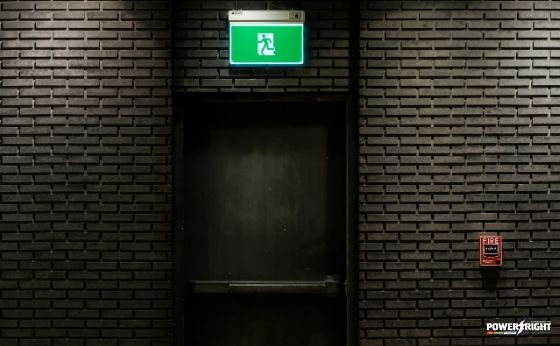
An emergency light is a battery-powered device. It switches on automatically in case a building experiences a power outage. There are emergency lighting standards requiring high occupancy residential buildings, such as hotels and dormitories, and new commercial buildings to feature such devices to ensure a more secure and safe environment.
Regardless of the type of emergency lighting system, every device is connected to the building's power supply and charges its internal battery continuously. This way the lights stay on during a power outage, allowing occupants to locate the exits if they need to evacuate the premises.
The easiest way to install a proper emergency lighting system is to address a professional, who knows the standards, providing clear guidelines. Emergency lighting can be sub-divided into emergency escape lighting and standby lighting. Consult a specialist to decide if you need some of the following or a combination of all.
Emergency escape lighting is further sub-divided into three categories:
Having emergency lighting, as well as testing it regularly, is a legal requirement in Ireland. All new systems have to be designed, installed and maintained according to IS3217:2013 (A1:2017) standard. Moreover, there are official recommendations regarding the types of emergency systems and their back-up durations for each category of premises.
To create a safe and attractive environment for your employees, customers and visitors, the interior and exterior lighting systems should work together. Even though an emergency will never happen in your facilities, your premises have to be prepared. To provide fast and accessible routes to safety, you should have external emergency lighting that illuminates the environment sufficiently to keep everyone safe.
For example, there are many types of egress lighting fixtures, such as exit signs and egress pathways signs that can be integrated into the lighting system to guide people towards safe spaces outside of the premises:
Switchable emergency light allows using it like a regular light which you can turn on and off. This kind of lighting gives you the flexibility to use it as any other light or leave it on permanently.
A switchable emergency light will turn on in the event of a power failure automatically as it will get the power from the back-up battery. It is necessary to note that only maintained emergency lights have this switchable function.
You are not obliged to hire a professional installer. However, there are strict rules and regulations that your system has to comply with. Otherwise, you could face at least unlimited fines or prosecution.
It is better to hire an accredited fire and security installer to ensure that your system is designed and installed in accordance with all the necessary emergency lighting standards and laws.
Whatever is the size or nature of your business, emergency lighting is one of the most crucial aspects. According to NSAI (National Standards Authority of Ireland), a life safety system must be maintained and tested on a regular basis. It includes annual emergency lighting testing and its quarterly inspection.
To make sure your lighting comply with all the standards, you should address a reliable safe electric registered company with highly skilled and trained staff. They can issue an official certificate to verify that your emergency lighting systems are up to regulatory standards and requirements.
Emergency lighting testing is to check that your luminaries and the system itself remain in operational order by simulating a mains power cut on the lighting circuit or individual luminaries. Hence, the emergency light system will have to operate via the battery supply.
There are some benefits of regular testing procedures:
Usually, manufacturers recommend testing and inspecting emergency lights and exit signs monthly, quarterly and annually. Provide your staff with a monthly schedule to perform a short functional test of the system.
For your quarterly test, illuminate each emergency light for 30 minutes (using its battery). For your annual test, do the same for 3 hours. Fill out the logbook as appropriate and make sure a technician who does the test issues a certificate.
Emergencies can happen at any time due to electrical power failure, severe weather or another event that may disable elements of your primary lighting system. The absence of light can jeopardize the safety of employees and visitors.
That is why there are some emergency lighting standards and regulations requiring the premises to have emergency exits, paths of egress and luminaires so that they can provide quick and accessible routes to safety.